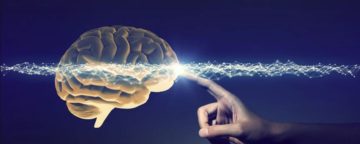Iris Kulbatski in The Scientist:
 Humans are bioelectrical beings. The collections of cells that make up tissues and organs communicate using the language of voltages and electric fields. This electrical code is produced by specialized ion channels and proteins imbedded in cell membranes. Bioelectricity also directs embryonic development. Long before the growing brain reaches maturity, stem cells are abuzz with activity, engaging in bioelectrical conversations.1 This network chatter coordinates the self-organization of tissues and gives physical shape to the human body, including the brain—a concept that was first popularized by Harold Saxton Burr in 1935.2 Although controversial at the time, modern technology eventually showed the prescience of Burr’s idea, providing a basis for exploring the intrinsic regenerative potential of the human body.3,4
Humans are bioelectrical beings. The collections of cells that make up tissues and organs communicate using the language of voltages and electric fields. This electrical code is produced by specialized ion channels and proteins imbedded in cell membranes. Bioelectricity also directs embryonic development. Long before the growing brain reaches maturity, stem cells are abuzz with activity, engaging in bioelectrical conversations.1 This network chatter coordinates the self-organization of tissues and gives physical shape to the human body, including the brain—a concept that was first popularized by Harold Saxton Burr in 1935.2 Although controversial at the time, modern technology eventually showed the prescience of Burr’s idea, providing a basis for exploring the intrinsic regenerative potential of the human body.3,4
Recently, Paul George, an assistant professor of neurology and neurological sciences at Stanford University, and his team applied insights from the field of developmental bioelectricity to regenerate the brain. “People respond very differently to strokes—younger patients recover a lot better than older patients. We asked whether we could recreate that younger environment,” George said. “A lot of cues help with the formation of the nervous system, including electrical, chemical, and physical cues.” Optimizing these conditions can help transplanted stem cells survive, integrate with local brain cells, and stimulate the body’s own repair mechanisms.
More here.
